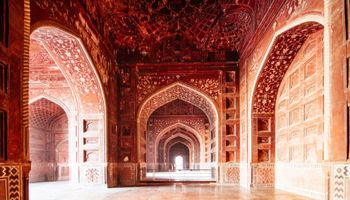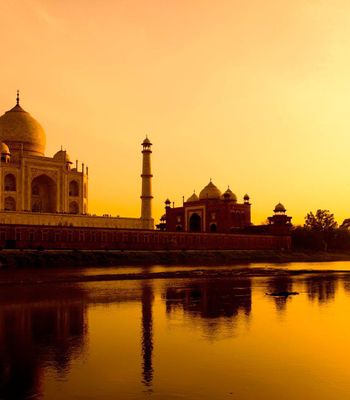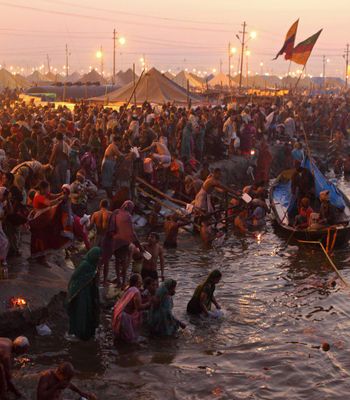Located in Uttar Pradesh, the Agra Fort was built in the late 16th century as a military stronghold and royal household. After eight years of construction along the Yamuna River, this Mughal structure was used for government work when Agra was the capital. Today, you can visit the Agra Fort because it's preserved as a UNESCO World Heritage site.
Revealing the History
This historic site began as a humble structure named Badalgarh Fort several decades before it was christened the Agra Fort. Indeed, many rulers defended and lost the fort over these primary years. Then, the Mughal emperor Akbar arrived in Agra.
Recognizing the importance of both the fort and the city, Akbar declared Agra as the capital. Next, he renovated the struggling fort with red sandstone supplied by neighboring Rajasthan. With nearly 4,000 workers, the Agra Fort was finally completed in 1573. The following years gave rise to interior renovations, many of which can be seen today.
Understanding the Architecture and Location
With red sandstone and a symmetrical design, the Agra Fort is a fine example of Mughal architecture. Indeed, the fort's wall inscriptions and delicate ornamentation stand out as you walk the grounds. For protection, the fort is surrounded by a moat and uses the Yamuna River as a natural barrier against attacks.
Remarkably, Agra Fort and the famous Taj Mahal are connected along the river's edge. By following the gardens separating the two properties, you can see both landmarks in a single day. The fort stands on a slight elevation and sturdy foundation, which gives it a bird's eye view of the Taj Mahal on a clear day.
Examining the Layout
With a size of nearly 100 acres, the Agra Fort has a semicircle layout within its 70-foot-tall walls. From a cursory glance, the fort appears impregnable even with four gates for everyday access. During Akbar's day, the western Delhi gate was the main passageway. With a drawbridge allowing access over the moat, welcomed visitors passed through the gate with marble detailing.
If under attack, the Delhi gate had another defense just inside the fort. Referred to as Hathi Pol or Elephant Gate, an interior ramp with a 90-degree turn greeted any enemies. Because most attacks occurred with elephants breaking the entryway, this ascent and sharp turn deterred any bombardments of the Agra Fort. This fascinating architecture tells a story even in modern times as you explore the fort on foot.
Visiting Notable Interior Structures
Because of the fort's age, the interior has been modified across the centuries to accommodate various rulers. As a result, enjoy several highlights as you walk through the main gate. For example, Jahāngīr’s Palace is named after Akbar's son and was a women's quarters. Nearby, marvel at the marble pillars inside the Diwan-i-Khas or Hall of Private Audience. Semi-precious stones sparkle along the pillars, too.
Notably, the Musamman Burj is a tower and open pavilion with a strategic location. It looks out at the Taj Mahal, which was where Shah Jahan would grieve after his wife's death. Overall, the fort's interior structures are varied and offer fascinating history as you walk deeper into the property.
Preparing For Your Visit
Agra Fort is open from sunrise to sunset. Locals receive a discount on the admission price and children under 15 are free to enter. Although the fort has many gates, visitors enter through the Amar Singh Gate only. For the best experience, arrive in the morning and plan for several hours of exploration. The fort's numerous structures are works of art in their own right.
Traveling to Agra Fort
The Agra Airport is only a short distance from the fort. For example, take a taxi or rickshaw from the airport to the Agra Fort. Alternatively, travel to Agra via the railway. Arrive at the Agra Cantt Railway Station, and take a taxi to the fort. Depending on traffic, the ride should take less than 20 minutes to reach the main gate.
Whether you're an architecture fan or a history buff, Agra Fort is a testament to the Mughal and 16th-century cultures. Carve out a full day to see both the fort and its sister structure the Taj Mahal during your vacation. Overall, this visit can teach everyone about North-Central Indian history and culture.















